Of the Grills I own, the Weber Kettle is the one I use the most.
I believe it’s one of the best grills and even smokers to exist, especially at a fair price-point.
I’ve owned this variation of the Weber Kettle for 1001 days.
To Preface this Review
The first Weber kettle I owned was given to me by my father and lasted 10+ years.
This version was so old that it didn’t have newer features like a lid thermometer, handle heat shield, or lid hanger.

Nevertheless, it worked and put out some of the best barbecue I’ve ever eaten.
One of the blades on the one-touch cleaning system broke and rather than replacing it, I opted to buy a new one in 2021.
What I Like About the Weber Kettle
A LOT could be said here but to harp on the main stuff:
- Price
- It’s built to last
- Versatility
For starters – the price.
You’d be super hard pressed to find a more affordable grill with 22″ of grilling space, engineered from decent materials, for the same price, with a long warranty.
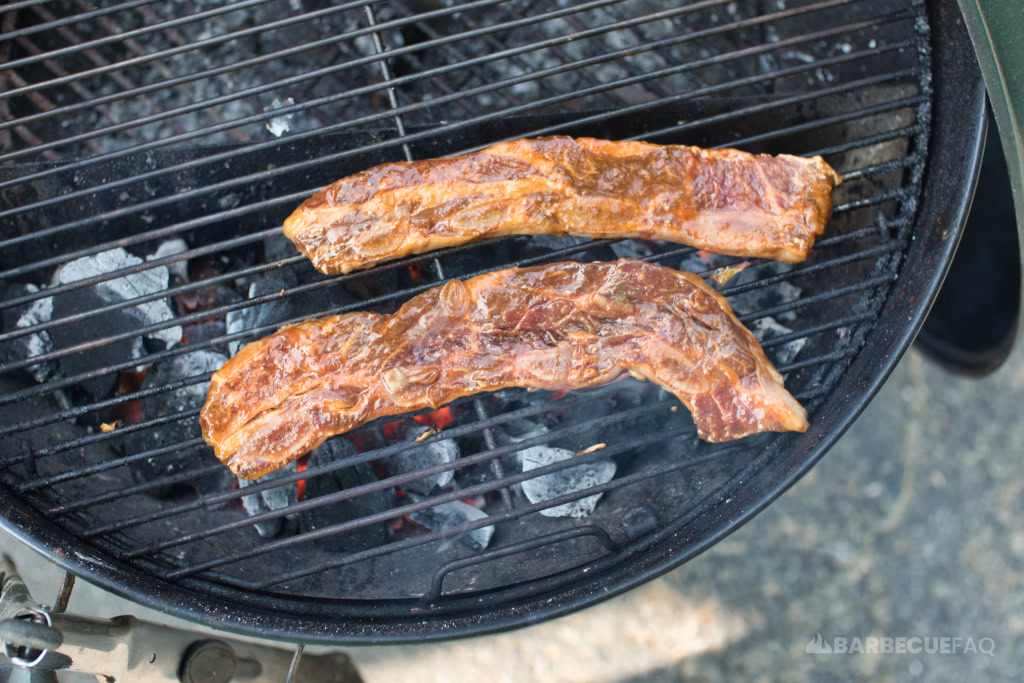
At the time of purchase, the Green Weber Kettle Premium was $194.00.
As of updating this article, it’s $219
Second, the Weber Kettle is built to last – truly.
The first Weber Kettle I learned on was my Dad’s and it lasted what seemed to be forever.
He then bought me my own Weber kettle that lasted roughly 12 years.
This durability is due large in part to Weber using nearly the same exact design since 1952.
These days you’re lucky if pellet grills last 5 years for big brand names that you’ll find at Walmart for 3x the price.
Most propane gas grills have short warranties too – which is pretty telling.
Charcoal also just tastes better.
Third, It’s super versatile
The Weber Kettle is capable of searing steak, grilling hamburgers and hotdogs, vegetables, etc.
It can also be easily transformed into a smoker through the strategic arrangement of charcoal.
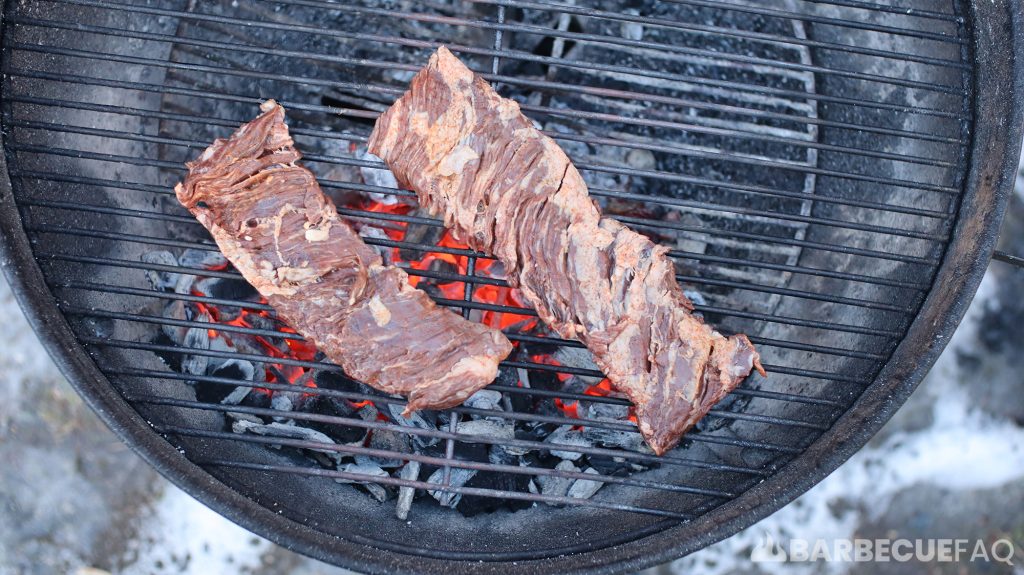
The biggest piece of meat that people will smoke is a brisket and the 22″ kettle can fit a 10-13 lb brisket no problem.
Pretty much anything you see BBQ joints smoke on big offset smokers, you can do in your Weber kettle.
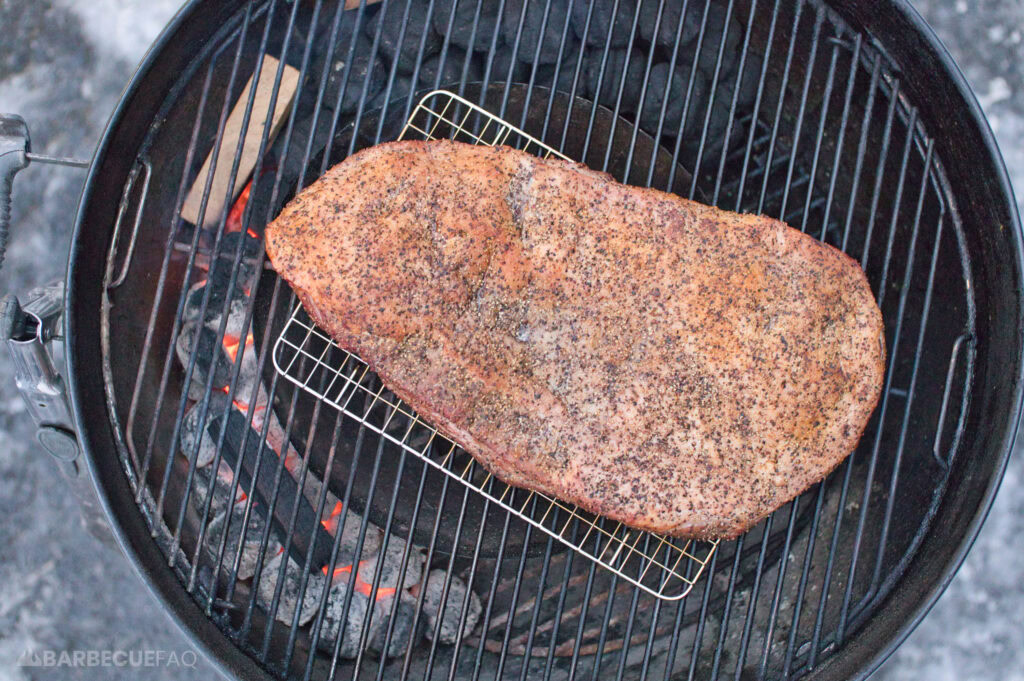
The Only Thing I Don’t Like is the Lid Thermometer But I Fixed That
If you don’t smoke meat, this is a non-issue.
The normal setup has the lid thermometer on the same side as the fire – so you’re reading the temperature of your fire, not the air above your food.
I fixed this with a tel-tru thermometer and a step drill bit for $40.

Competitor’s to the Weber Kettle?
The only real competitor to the Weber Premium Kettle is Slow N’ Sear’s 22″ kettle – which they launched in 2020.
This grill is also nearly double the price of a Weber kettle.
If you’re someone who doesn’t smoke meat and has no interest in doing so, I wouldn’t even consider buying the SNS Kettle.
The Weber kettle is perfect for backyard grilling.
Another option is the PK Grill – which I ended up buying.
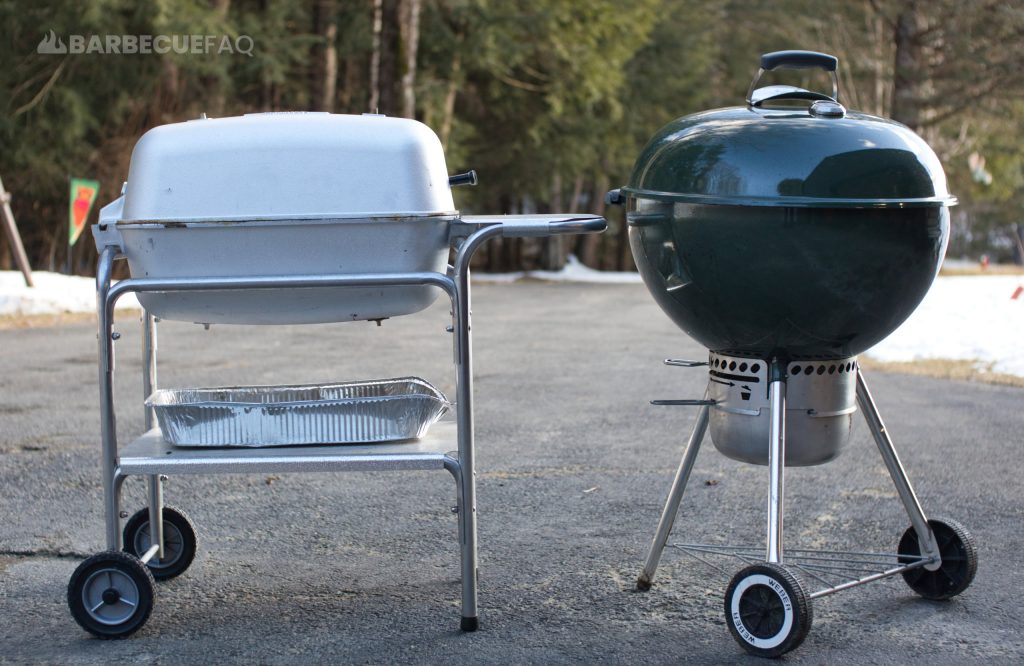
While I don’t regret buying it, it does pretty much the same stuff as a Weber Kettle – only it costs nearly 3x the price.
It’s essentially bulletproof though which is why the warranty is 20+ years.
It also looks cool and I’m into retro stuff so that’s my justification.
Thoughts on the Weber Kettle After 1001 Days of Owning it
I still firmly believe that the Weber Kettle is one of the best grills to ever exist.
Almost all my articles that I’ve written in the past 3+ years on Barbecue FAQ have used this grill.
After following my cleaning protocol, the grill looks like the day I bought it (with maybe a few scuff marks).
Here’s the grill after cleaning December 20th, 2023
Want to grill meat?
There’s probably no better option.
First time smoking meat?
I smoke all my meats with the Weber Kettle first before finishing them in my oven or electric smoker.
I’ve done so for 15+ years.
On a budget?
I’ve yet to find a more affordable grill/smoker with a similar warranty.
Into Direct Heat BBQ?
Invest in an elevated cooking grate, get your grill to 300-325F and cook directly over the hot coals.
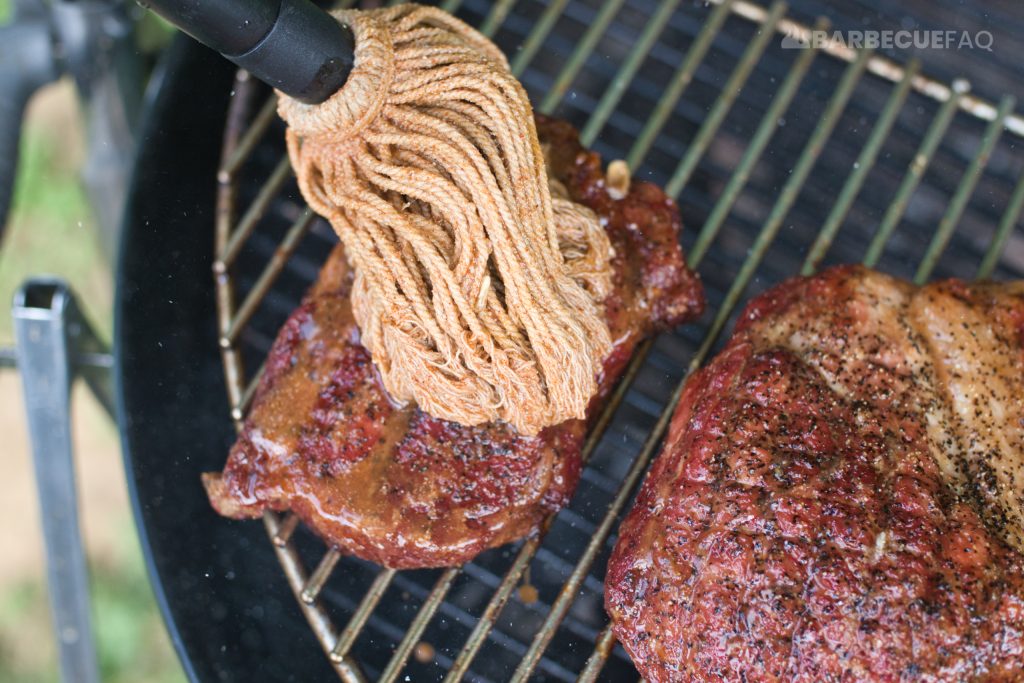
Overall, after another 2 years of using this grill I still have no issues.
There’s no rust, nothing has broken, and the grill works as intended.


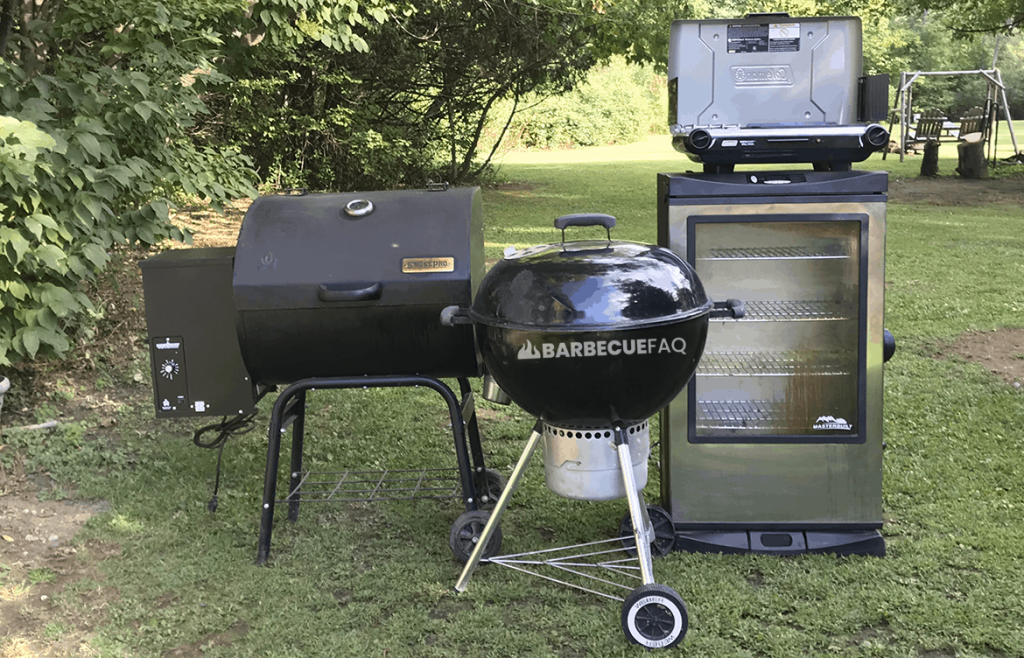
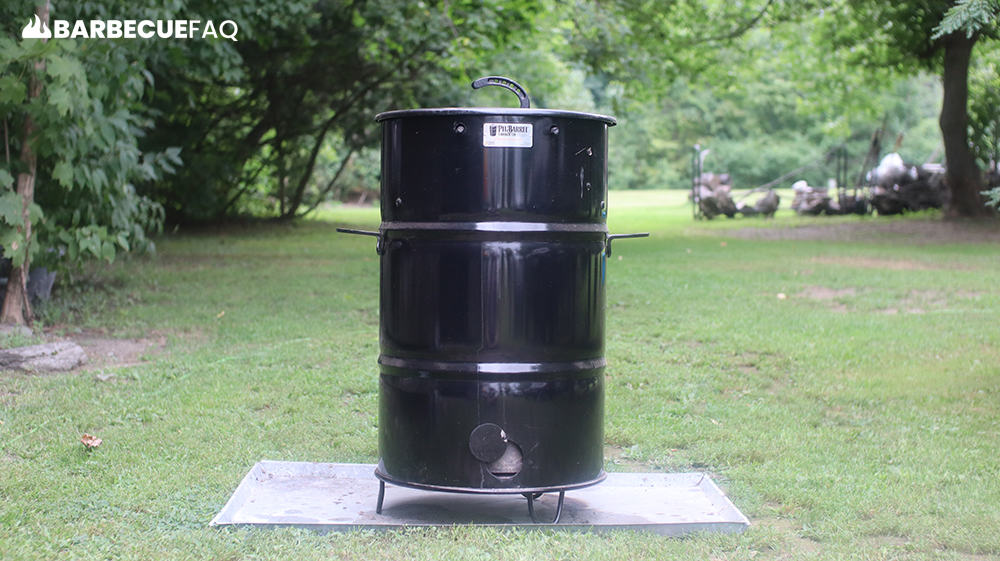
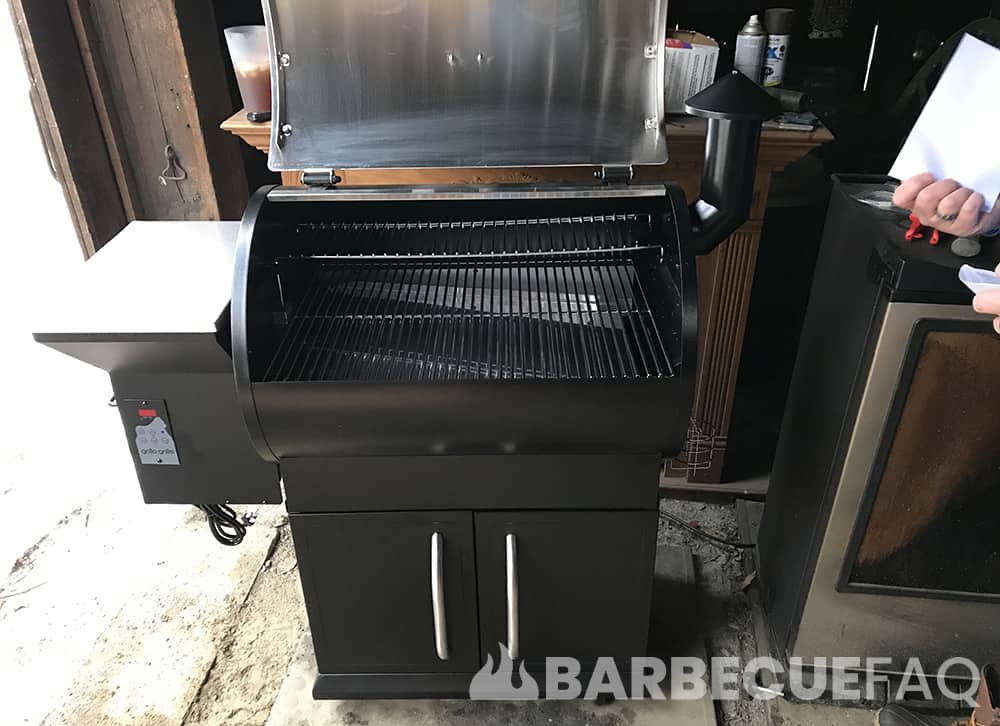
6 comments
Greg Perkins
1 bought my blue Weber kettle charcoal BBQ in 1980 when my son was born. I think I paid $39.95 for it. I’ve replaced the charcoal grate once and the cooking grill once. I use it easily 3 times a week. That’s approximately 7000 meals. I grilled chicken leg quarters last night and sirloin steak tonight. But, today, I did have to reattach the handle on the lid for the first time. The weld broke on one side, so I reattached it using machine screws and washers and nuts. No complaints, just great meals for 45 years. I’m sure it will last till I am not physically able BBQ anymore.
Dylan Clay
Cheers for the comment Greg – it really helps to show just how long the grill can and will last. If only the grills were still 40 bucks though, granted $200-ish isn’t terrible.
Truth be told – I still have the grill I prefaced the article with and it’s one of the best gifts I’ve ever received; It’s likely a big part of why I love BBQ so much.
-Dylan
Jed Klang
We have a kettle grill for years until we found a kamado I would never go back to a kettle the problem with the kettle is all the heat comes right out the metal
Dylan Clay
To each their own Jed.
I’ve smoked several times on a BGE and a few on a Kamado Joe – I’d still rather the meat smoked on my Kettle. The same could be said for grilled foods, which, in my opinion, taste about the same on either grill.
I’ve never had issues with “heat loss” either with my kettle. I can smoke for 5-8 hours without refreshing coals and in most cases you don’t need 600F+ for longer than a few minutes if you’re searing a steak.
Also a Kettle is ~$200. Where-as with ceramic grills, regardless of brand, you’re paying anywhere from $400 – $2k+ (unless you’re buying some of the tabletop models with 12″ of grill space).
Also – ceramic grills are quite heavy. In most cases, moving them is a pain even with caster wheels. Where-as I can literally drag my Kettle up and down my driveway, even through my acreage of forest and not break a sweat. My grills live in my barn and I drag them out when I need to use them – I’m not fortunate enough to have a permanent fixture location for a ceramic grill.
Like I said, to each their own 🙂
Baba Rhum
Twenty years ago out of the ‘blue’ my wife brought a Weber black kettle grill home. With just basic care it will last a lifetime.
The main thing to do is to cover the grill to protect it from the elements (I leave mine outside). I used regular trash can bags for years but some time ago I bought a Weber cover for it and this works much better.
I sometimes grill and sometimes smoke and the Weber grill works great for either. I don’t need a burner or anything else extra.
For beginners or experienced grillers the Weber kettle will be your go-to grill of choice.
Dylan Clay
Thanks for bringing up the cover as I totally forgot to mention investing in one.
The $20-25 cover that Weber makes is worth its weight in gold, especially for making the grill last longer. I’ll be sure to circle back around on this review and add pictures of the Cover I bought with the grill.
Thanks for the comment!